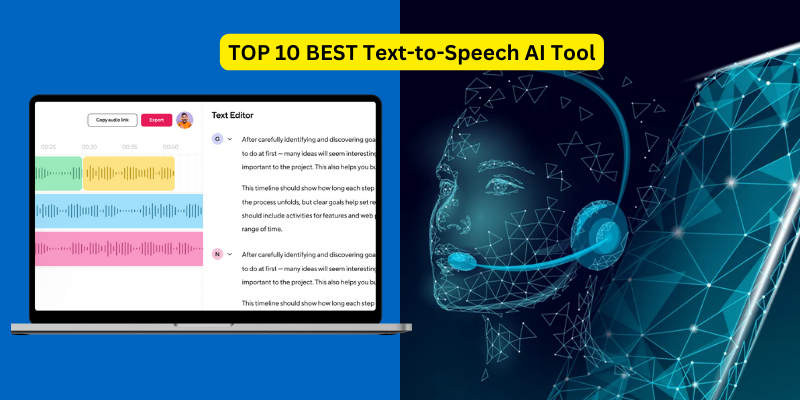Introduction
Reading can be a challenge. Whether it’s your job to read a lot, or you simply enjoy browsing through your favorite books, reading requires a good amount of time and attention. That’s why text-to-speech AI tools have been developed to make our lives a lot easier. In this article, we will introduce you to this innovative technology and provide you with tips and tricks to make the most out of it!
Text-to-speech AI tool is an innovative technology that uses natural-sounding text-to-speech voices to read text out loud. These voices use artificial intelligence to mimic real human intonation, pitch, rhythm, and tone, making it seem like someone is reading the text to you. This tool can convert any text, whether it’s a book, a PDF, or an article, into speech, allowing you to listen to it instead of reading.
Best Text-to-Speech AI Tool
Natural Reader
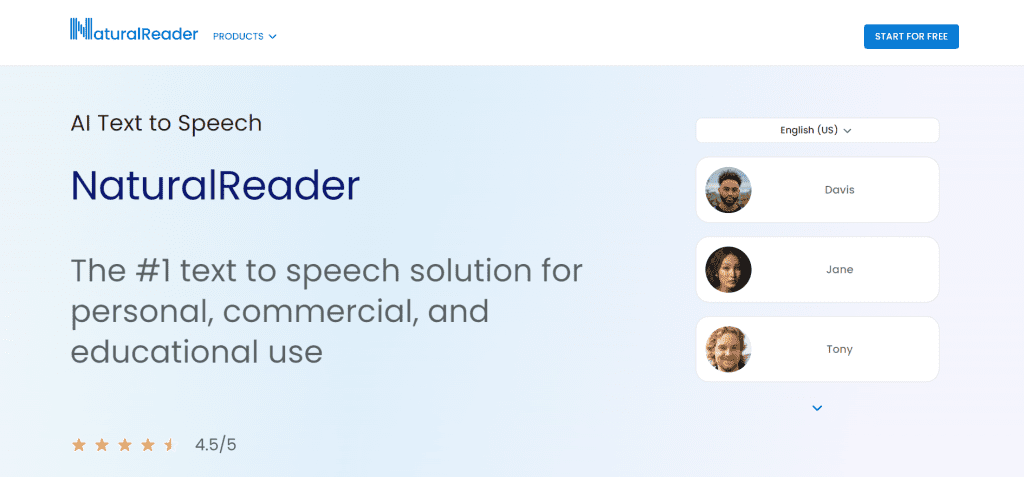
When it comes to Text to Speech AI, Natural Reader is a popular choice among users. This tool offers features such as natural-sounding voices, customizable speech, and support for various file formats. The tool’s web-based platform also makes it accessible and straightforward to use.
Play.ht
Ranked by many as one of the most reliable Text to Speech AI resources available on the market today, Play.ht has garnered thousands of loyal users due to its advanced features. Users can personify their text-based content using various realistic voices and dynamic speech modifications—this increased degree of versatility makes podcasts come alive! Also noteworthy is its integration with leading platforms: Anchor and Spotify.
LOVO AI
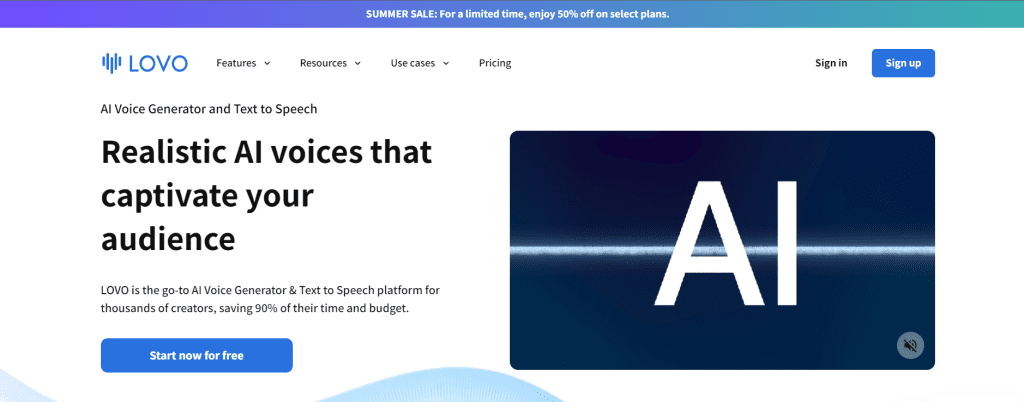
LOVO AI is a Text to Speech AI tool that offers multiple spoken languages. This customizable tool provides the user with a unique voice, tone, and pitch capability that allows for a more personalized experience. Additionally, LOVO AI offers seamless integration with other platforms such as Alexa and Microsoft.
Murf AI
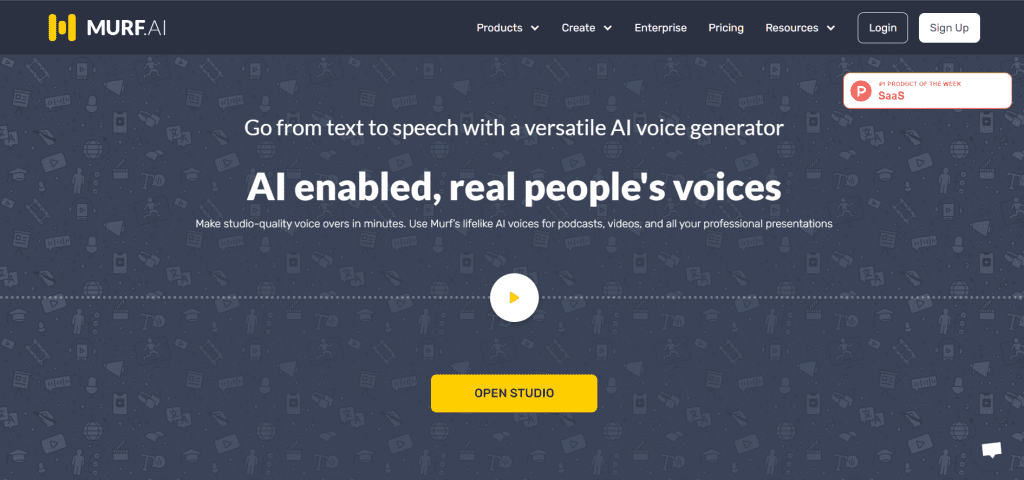
Murf AI is an automated voice-over tool that utilizes Text to Speech AI technology to generate professional voice-overs with ease. The tool offers a wide selection of voices and languages, customizable speech settings, and automatic translations. This tool is an excellent option for marketers, content creators, and video editors who need to produce high-quality voiceovers quickly.
Typecast
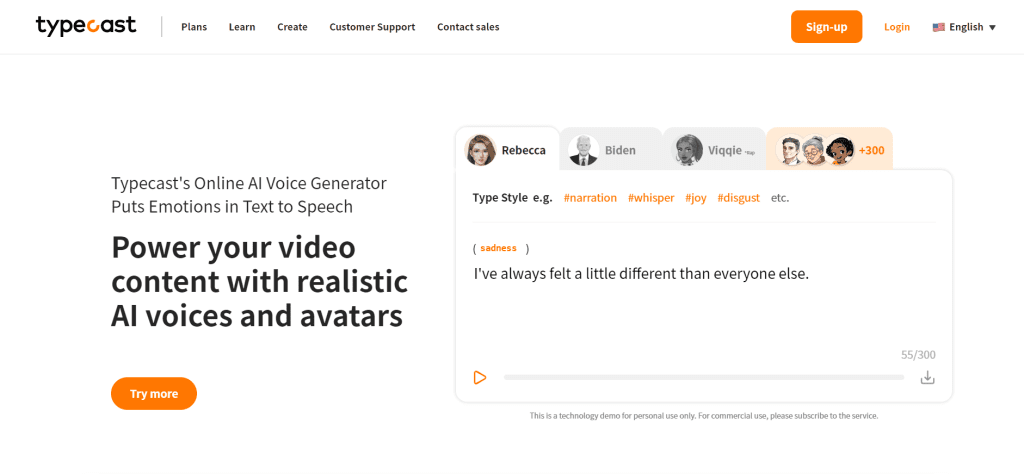
For those seeking impressive audio products like audiobooks or voiceovers suitable for commercials take note: you need look no further than Typecast! This superior Text to Speech AI tool provides excellent services which include customizable speed settings and pitch controls alongside a robust library filled with diverse voices. The real kicker? It comes combined in an easy-to-use interface providing professional-quality editing outcomes efficiently. Why spend countless hours figuring things out on your own? Experience the convenience of this incredible platform today!
Synthesia
Synthesia is another Text to Speech AI tool that is geared specifically toward creating video content. This revolutionary platform uses AI technology to convert text to speech with precision and accuracy. Additionally, Synthesia offers features such as automatic video creation, a wide range of voice options, and the ability to change visuals and animations- making it an attractive option for content creators.
Resemble AI
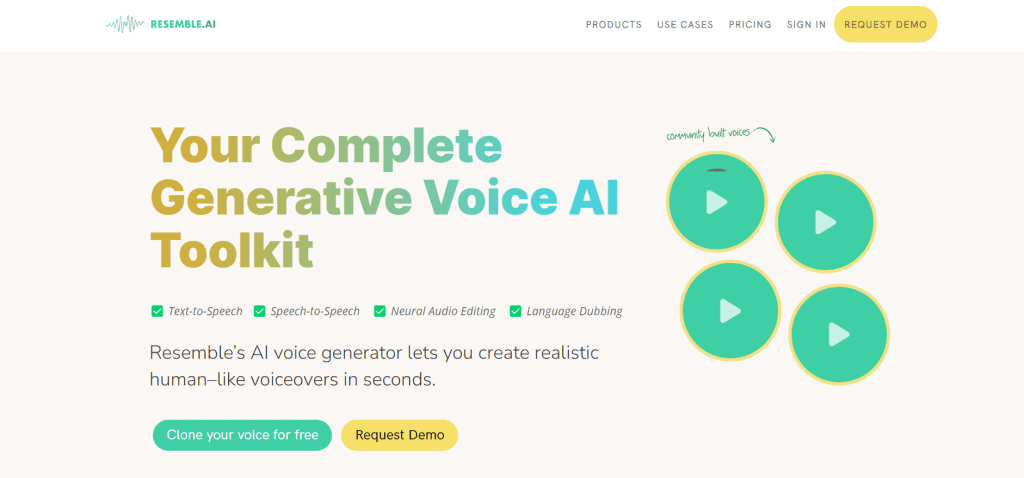
Resemble AI is a cutting-edge Text to Speech AI tool that has taken the market by storm. Resemble AI offers incredibly realistic-sounding voices customized to your tone and style. Additionally, the tool offers the ability to create personal chatbots, voice assistants and is well-suited to a wide range of applications.
Understanding Text-to-Speech AI
Definition of TTS AI
The incredible TTS AI technology is capable of transforming written words into speech that closely resembles natural human communication. It’s intricate algorithms and machine learning methodologies are responsible for this amazing feat.
Understanding Natural Language Processing (NLP)
NLP is a subfield of AI that deals with the interaction between human language and computers. It enables TTS AI to analyze written text and produce appropriate speech with the right tone, inflections, and pauses.
Types of TTS AI Available in the Market
There are two types of TTS AI available in the market: rule-based and neural TTS. Rule-based TTS utilizes pre-built rules to generate speech while neural TTS utilizes machine learning algorithms to generate more natural speech.
Benefits of Text-to-Speech AI Tool
TTS AI offers several benefits, including improved accessibility, enhanced user experience, reduced production time and costs, and multilingual options and flexibility.
Use Cases of Text-to-Speech AI Tool
TTS AI can be used in various industries, such as assistive technology, e-commerce, navigation and directions, education and learning, news and journalism, podcasting and audiobooks, and entertainment.
Challenges of Text-to-Speech AI Tool
Despite its benefits, TTS AI faces several challenges such as accents and pronunciation, the artificiality of voice, emotional expression, and naturalness in tone and inflection.
Innovations in Text-to-Speech AI Tool
With advances in machine learning and NLP, TTS AI is constantly evolving. Innovations such as customized voices, multimodal speech, and improvements in emotional expression are transforming TTS AI.
TTS AI and the Future of Communication
The integration of TTS AI with virtual and augmented reality, real-time translation, and interactive and conversational AI is shaping the future of communication.
Industry Analysis and Future Trends
Key players in the TTS AI industry, market growth, revenue projections, emerging trends, and technological advancements are driving the future of TTS AI.
Case Studies and Success Stories
Case studies of successful TTS AI implementations by Google’s WaveNet, IBM Watson, Amazon Polly, Apple Siri, and Nuance Communications provide insights into its effectiveness.
User Adoption and Reception of Text-to-Speech AI Tool
User satisfaction rates, benefits to specific demographics, challenges with implementation, surveys, and research studies indicate TTS AI’s widespread adoption.
Future Applications of Text-to-Speech AI Tool
The potential future applications of TTS AI in healthcare, social media and messaging apps, business and finance, and the automotive industry show its versatility.
Potential Future Developments and Innovations
TTS AI’s future development and innovation may include human-like voice and emotional expression and brain-computer interface, wide-scale implementation of conversational AI, and more.
Challenges and Limitations for TTS AI in the Future
Challenges and limitations such as data integrity and quality, endless customization options, ethical considerations, and more exist for TTS AI in the future.
Conclusion
On this website, we give updates about artificial intelligence and technology. the Text-to-Speech AI tool is a game-changer in the world of communication technology, providing benefits such as improved accessibility, enhanced user experience, and reduced production costs. With its potential for wider applications and developments, the Text-to-Speech AI tool has an exciting future in store. In this article we discuss the Text-to-speech AI tool, if you want to get more details about the image-to-caption AI tool please check the home section of the website.
Recap of Key Points
- TTS AI converts written text into spoken language using natural language processing (NLP)
- There are two types of TTS AI available in the market: rule-based and neural TTS
- TTS AI offers benefits such as improved accessibility, enhanced user experience, and reduced production costs
- TTS AI faces challenges such as accents and pronunciation, the artificiality of voice, emotional expression, and naturalness in tone and inflection
- Innovations in TTS AI include customized voices, multimodal speech, and improvements in emotional expression
- TTS AI poses ethical implications such as privacy concerns, cybersecurity risks, increased reliance on AI, and job displacement
- The integration of TTS AI with virtual and augmented reality, real-time translation, and interactive and conversational AI are aspects of the future of communication
- Future applications of TTS AI may include healthcare, social media and messaging apps, business and finance, and the automotive industry
- Challenges and limitations such as data integrity and quality, endless customization options, ethical considerations, and more exist for TTS AI in the future
If you’re interested in exploring TTS AI further, try implementing it in your business or personal life. There are several TTS AI tools available online, including Google’s WaveNet, IBM Watson, Amazon Polly, and Apple Siri.
FAQs
Can TTS AI understand natural language?
Yes, the Text-to-Speech AI tool can understand natural language as it utilizes natural language processing (NLP) techniques to analyze written text and produce appropriate speech with the right tone, inflections, and pauses.
How does TTS AI benefit individuals and businesses?
Text-to-Speech AI tools benefit individuals and businesses by improving accessibility, enhancing the user experience, reducing production time and costs, and providing multilingual options and flexibility.
What are some challenges associated with TTS AI?
Some challenges associated with Text-to-Speech AI tool include accents and pronunciation, the artificiality of voice, emotional expression, and naturalness in tone and inflection.
What is the future of TTS AI?
The future of Text-to-Speech AI tool involves integration with virtual and augmented reality, real-time translation, and interactive and conversational AI, wider applications in various industries, and potential developments such as human-like voice and emotional expression, and brain-computer interface.











